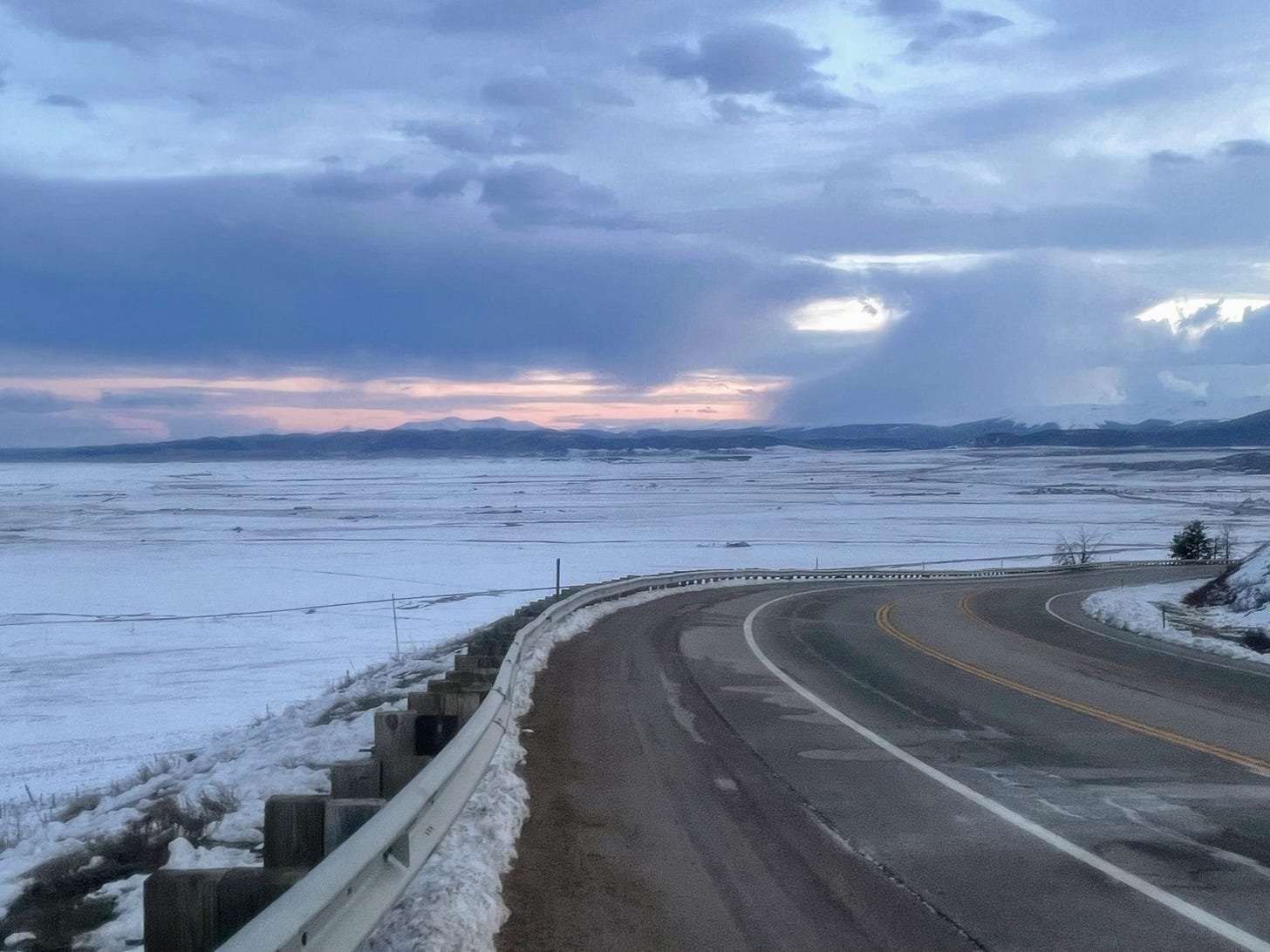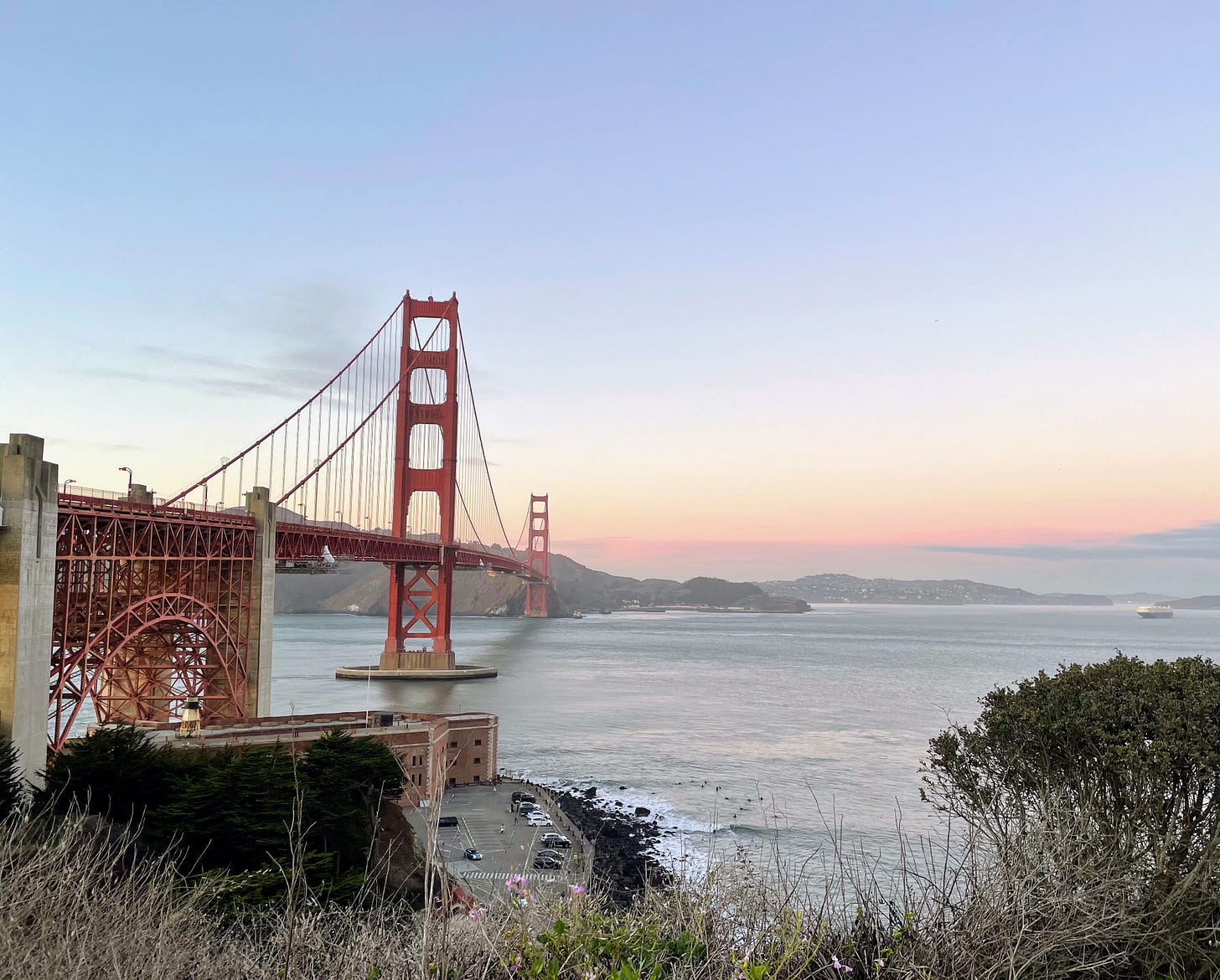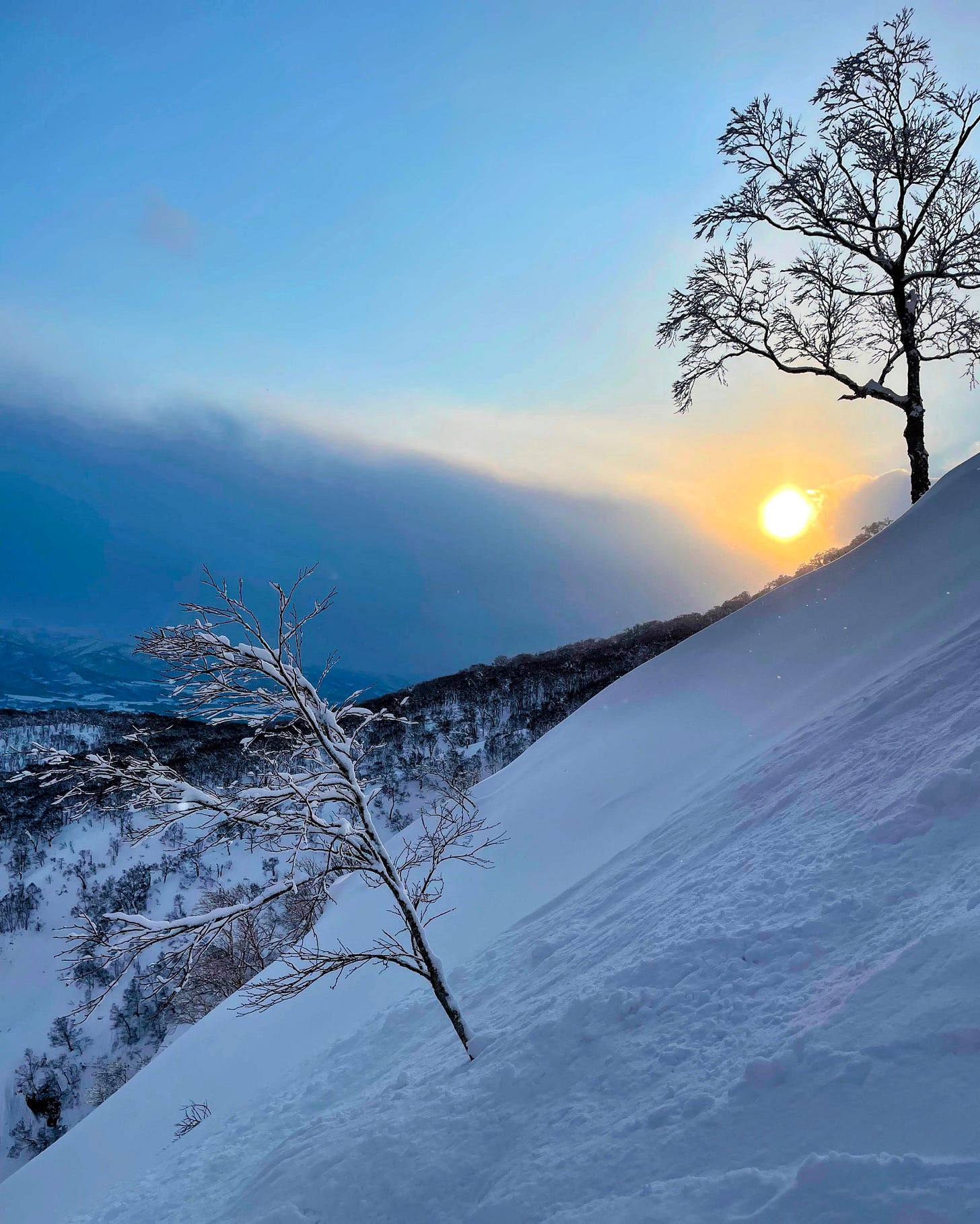Most People Have (Likely) Never Seen Snow
Questioning assumptions — a brief tour through climate and geography.

Whether or not that headline turns out to be accurate — we’ll investigate here — it’s closer to truth than most of us in North America and Europe might ever realize.
And it’s a notion worth keeping in mind when assessing what is “normal” in the world.
I expect the premise of this post to polarize a bit. Some may see it and think such an obvious fact isn’t even worth writing about.
But I expect many — especially those in North America and Europe, including my home state of Colorado, where I write now — will see that headline and think it must be preposterous. Nothing more than clickbait, a lie.
In fact, it was one such Coloradan who prompted me to look into this. I spoke with her briefly at a group trail run last week (a very Colorado kind of event), and she told me how she’d recently visited Costa Rica. She’d enjoyed it — except for the heat and humidity. She said she has no desire to ever live there, or anywhere tropical like it.
“It’s unnatural,” she said. “I think humans are meant to experience the change in seasons.”
I told her I was once tempted to think the same. I moved to San Francisco in 2014, and loved it — but after a few years I began to miss the seasonal change of weather myself. San Francisco, for those who haven’t spent time there, does have “seasons.” But they might be classified as “mostly warm and sunny,” “mostly cool and sunny,” and “cooler and rainy, but still often sunny.”
It’s not that I hated this. It was, after all, almost always sunny and cool and overall quite pleasant. But I began to notice how this steady drum of cool weather, the lack of variability, brought about some funny little things.
I realized after a time in the city, for instance, that I struggled to remember when certain events had taken place. I came to realize how much of my memory of an event seems to rely upon my observation of the weather when it occurred: the sky, the trees, whatever it was I and those around me had been wearing. And I realized that in San Francisco, these memory aids were nearly useless. “It was cool and sunny and I was wearing jeans and a shirt” could describe 97% of the days in San Francisco. (Throw on a jacket, and you can describe most nights.)

There was a certain city block which, anytime I drove it, would emphatically cause my brain to believe it was early autumn. Just for the brief few seconds it took to drive the block, but I would believe it, truly think it. There must have been some plant or tree growing along the road, some scent ripping deep into my olfactory subconscious. But it would fill me with momentary anticipation, with warmth and nostalgia — memories of football games and chilly tailgate beers, the promise of cool days and falling leaves, Thanksgiving and Christmas, falling snow, candlelight. A sense of security in a warm, lit home against the cold dark night.
And then I would look around me in San Francisco, see the blue sky and trees that might be flowering, or bare, or somewhere in-between. I’d remember I was dressed in a t-shirt and jeans and would likely be for the next several months. I would realize it was actually May, or February, or sometimes October and indeed fall — but only for that one city block, and nowhere else in the city where I lived.
Or maybe it’d be December, when those autumn promises had already come and gone and turned to winter realities in the rest of the northern world. I’d feel that antecedent wave of warmth, nostalgia and anticipation. And a few seconds down the road, a little disappointment, a slight sadness.
I loved my time in San Francisco, and a hunger for cold weather was by no means the principal reason I finally left. But all this is to say, I understand where the woman at the run club is coming from, why she would think it unnatural for humans to live somewhere without changing seasons.
But also, she’s quite wrong.
So how many humans on earth have ever seen snow? I wanted to figure this out, and tried some back-of-the-envelope calculations, but it got complicated. So I’ll simplify things soon, but I least want to show my work.
I started with the big countries I figure we can easily rule out — Indonesia, Brazil, Nigeria, Philippines, much of India (though it snows in the north). Big, hot countries where the majority of people have not likely yet had the opportunity to travel abroad to see snow.
I found at least one useful data source: Pew Research last year published the results of a fascinating study surveying the percentage of people in 24 countries who have traveled abroad.
The study found — unsurprisingly given the cost of flights, obtaining visas, and more — that international travel correlates highly with GDP per capita, a rough estimate of individual wealth in a country.

Unsurprisingly, most of these low-GDP countries with low rates of travel also happen to be on the list of populous, hot countries without much chance to see snow.
Though I did enjoy seeing that even in these places, many would like to travel abroad:

As an interesting aside, the study also found that those in countries with more international travel both “feel closer to others globally” and are more likely to “see benefits to their country’s active engagement with world affairs.”
Chalk that up for the benefits of international travel! 💪
So anyway, I made a list of the most populous of these low-snow countries and used the Pew data to come up with a rough estimate of how many in each had likely traveled abroad and (possibly) seen snow. Because the northern ~third of India sees snow, I removed a good chunk of that country’s population.
With these countries alone, we already have a conservative estimate that over two billion people on earth today have likely never seen snow. (This is definitely a conservative estimate because most who travel from tropical places, like Thailand or Nigeria, are likely going somewhere nearby. And this completely leaves out those living in hot or coastal areas — most of sub-Saharan Africa, southern China, northern Australia, or even Florida — who must travel far from home to see snow, too.)
Of course, I rapidly saw how this could quickly go off the rails, and gave up. Two billion isn’t anywhere near the four needed to make my original statement true, but I feel safe the number is close to that.
More simply — and directly to the point of whether or not it’s “against human nature” to live somewhere without four seasons — around 40% of the world’s population live in the tropics today. For all those people, the seasons tend to oscillate between “very hot and humid” and “still hot and even more humid, with bouts of torrential rain.”
And it’s worth noting that because of birth rates and shifting demographics, that proportion is expected to become a full 50% by the year 2050. And who knows where the bounds of “the tropics” will extend by then, given warming global temperatures 🫠

The question of how many people in the world have seen snow is fun to ponder, but little more than that. What is important, I think, is to realize just how much of the world lives in environments very different from those of Europe and North America. Places which, historically, have driven the commanding media and cultural narrative around what “normal” is.
Many of us in North America and Europe may dream of a “White Christmas” — but approximately 2.4 billion people worldwide practice some form of Christianity. And many might be quite alarmed to wake up Christmas day to a blanket of fresh snow.

All that said, my very warm-blooded Colorado self does quite enjoy cold weather. And after this too-hot summer, I’m already thinking about it 😬 ❄️.
Song of the Week: Lola Marsh — Four Long Seasons







And the number will grow smaller and smaller over time…
Faux snow in Abu Dhabi an outlier. The snow-white Christmas, does seem a commercialized and majority pale-skinned one, not to overlook Buffalo, Detroit and cousins. :) This is esp. a fun question to consider combined with the likelihood of a snowy first Nativity. Thanks for writing!